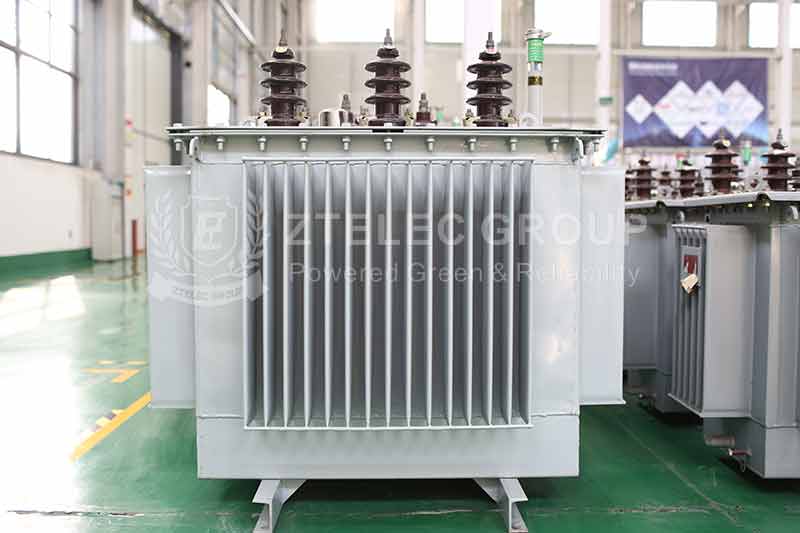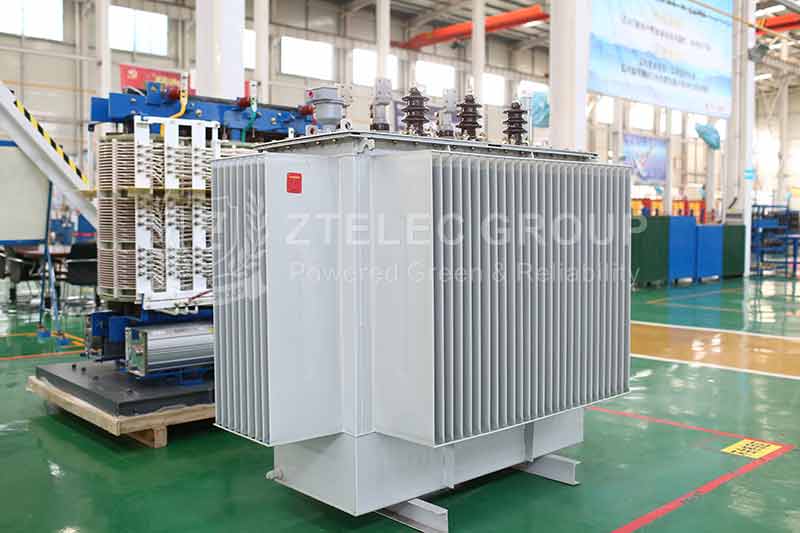Classification and Performance Characteristics of Oil-Immersed Power Transformers
Oil-immersed power transformers are extensively utilized in electrical systems for the conversion and distribution of electricity. Their exceptional insulation and cooling properties make them essential components in various power systems. This article offers a comprehensive overview of the classification and performance characteristics of oil-immersed power transformers, providing a deeper understanding of the functions and applications of this vital equipment.

Ⅰ. Classification of Oil-Immersed Power Transformers
Oil-immersed power transformers can be classified according to several standards.
1.By Cooling Method
- Natural Air-Cooled (ONAN): In this type, the oil circulates naturally through convection, and heat dissipation primarily depends on natural convection and radiation. This transformer design is straightforward and is well-suited for locations with lower loads or favorable site conditions.
- Forced Oil Circulation (ONAF): This transformer is equipped with an oil pump that actively circulates the oil, enhancing cooling efficiency. It is ideal for locations with higher loads or where increased cooling capacity is necessary.
- Forced Air-Cooled (OFAF): In addition to forced oil circulation, this type incorporates external fans to improve cooling efficiency. It is ideal for high-load conditions or environments with limited space.
2.By Insulation Structure
- Single-Phase Oil-Immersed Transformer: Primarily utilized for lower capacities, including residential power supply and small industrial equipment.
- Three-Phase Oil-Immersed Transformer: This transformer is widely utilized in electrical systems for voltage conversion and distribution. Although it has a more complex structure, it is capable of handling larger loads.
3.By Application
- Power Transformer: Utilized in electrical systems to either increase or decrease voltage, thereby ensuring a stable power supply.
- Distribution Transformer: Primarily utilized in distribution networks to convert high-voltage electricity into a lower voltage that is suitable for end-users.
4.By Installation Method
A pad-mounted transformer is typically installed on a foundation above ground, making it suitable for outdoor or site environments.
- Pole-Mounted Transformer: This transformer is mounted vertically, which minimizes ground space usage and is ideal for environments with limited space.

Oil-Immersed Power Transformers
Ⅱ. Performance Characteristics of Oil-Immersed Power Transformers:
1.Exceptional Insulation Performance
The transformer oil in an oil-immersed transformer possesses exceptional insulation properties, effectively preventing short circuits between electrical components. In addition to its insulating capabilities, transformer oil also ensures stable electrical performance under voltage stress.
2.Excellent Heat Dissipation Capability
Another important function of transformer oil is heat dissipation. The design of oil-immersed transformers enables the oil to circulate within the transformer, effectively carrying away the generated heat and maintaining the normal operating temperature of the transformer.
3.Strong Structure
Oil-immersed power transformers feature a durable design that can endure substantial mechanical shocks and vibrations. This resilience guarantees that the transformer functions reliably, even in challenging environments.
4.Strong Environmental Adaptability
Due to their oil-immersed design and protective casing, these transformers exhibit strong adaptability to environmental conditions and can operate reliably in a variety of climates and settings.
5. Ease of Maintenance and Inspection
The design of oil-immersed transformers facilitates relatively straightforward maintenance and inspection, particularly because the transformer oil can be regularly tested to verify its insulation and cooling effectiveness.
6. Environmental and Safety Considerations
Modern oil-immersed transformers utilize advanced materials and technologies to minimize the risk of oil leakage and ensure that the insulating oil meets environmental standards, thereby having a minimal impact on the environment.
Oil-immersed power transformers are essential components of electrical systems, with their classification and performance characteristics significantly influencing their diverse applications across various power settings. Ranging from basic cooling methods to intricate structural designs, oil-immersed transformers are valued for their superior insulation and cooling capabilities, making them indispensable in contemporary electrical systems. A thorough understanding of these classifications and characteristics enables engineers to optimize transformer selection, thereby enhancing operational efficiency and reliability in practical applications.
- more+releated article
- 2025-12-13G10 and FR4 Epoxy Boards: Commonly Used for Ge
- 2025-12-13Comparison of Heat-Resistant DDP Insulating Pa
- 2025-12-12Price of a 1600kVA 10kV Cast Resin Dry-Type Tr
- 2025-12-12How to Choose Epoxy Laminate Materials for Gen
- 2025-12-11Protection Configuration Principles for 35kV D
- 2025-12-11The Price of Heat-Resistant DDP Insulation Pap
- 2025-12-10Application Prospects of 10kV/35kV Oil-Immerse
- 2025-12-09How to Reduce the Maintenance Cost of Oil-Imme
- 2025-12-09How to Choose the Best 110 kV Oil-Immersed Pow
- 2025-12-08Heat-Resistant DDP Insulation Paper





